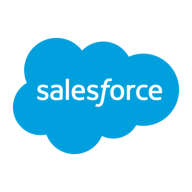

MuleSoft Anypoint Platform and IBM Sterling B2B Integration Services compete in enterprise connectivity and B2B integration. MuleSoft is favored for its API management flexibility, while IBM Sterling is recognized for robust B2B features, making it suitable for complex integrations.
Features: MuleSoft Anypoint Platform provides comprehensive API management with seamless application connections, user-friendly tools, and a versatile design that benefits developers. IBM Sterling B2B Integration Services excels in secure, scalable B2B integrations, particularly effective for industries with complex supply chains, emphasizing strong transaction capabilities.
Room for Improvement: MuleSoft Anypoint Platform could enhance its onboarding processes to reduce reliance on technical staff and improve ease of use for non-technical users. It may also benefit from more localized language support and expanded integration connectors. IBM Sterling could improve its user interface for more intuitive use, streamline customization requirements, and reduce complexity in configuration.
Ease of Deployment and Customer Service: MuleSoft Anypoint Platform offers a cloud-based, hybrid deployment model, recognized for quick and intuitive integration with existing systems. Its customer service efficiently addresses technical concerns. IBM Sterling B2B Integration Services typically require more traditional deployment methods and customization, but provide detailed and resource-rich customer support, beneficial for complex deployments.
Pricing and ROI: MuleSoft Anypoint Platform is noted for a relatively lower initial setup cost and strong ROI due to integration simplicity and broad API services. IBM Sterling B2B Integration Services has a higher setup cost but offers substantial investment returns in industries requiring comprehensive B2B integrations.
| Product | Market Share (%) |
|---|---|
| MuleSoft Anypoint Platform | 10.1% |
| IBM Sterling B2B Integration Services | 14.7% |
| Other | 75.2% |


| Company Size | Count |
|---|---|
| Small Business | 3 |
| Midsize Enterprise | 1 |
| Large Enterprise | 5 |
| Company Size | Count |
|---|---|
| Small Business | 21 |
| Midsize Enterprise | 12 |
| Large Enterprise | 29 |
IBM Sterling B2B Integration Services are designed to alleviate the burden on internal resources by providing secure connectivity and collaboration with your customers, suppliers, and business partners. The solution is built on the cloud-based B2B integration and visibility capabilities of IBM Sterling B2B Collaboration Network and provides comprehensive service offerings for partner onboarding, B2B process management, and trading partner support.
Accelerate B2B collaboration with global customers and suppliers by leveraging our B2B expertise.
MuleSoft Anypoint Platform provides API management and integration capabilities with scalability, ensuring seamless connectivity across systems.
MuleSoft Anypoint Platform offers API management and integration capabilities within a user-friendly interface. With a range of connectors and the ability to handle integration patterns, it enables data integration across environments with support for API-led connectivity. High scalability, observability, batch processing, and tooling are key features, enhancing performance while simplifying deployment.
What are the standout features of MuleSoft Anypoint Platform?MuleSoft Anypoint Platform is employed by organizations for API management and seamless integration across systems in industries like retail and e-commerce. It connects enterprise applications in environments such as SAP and Salesforce. Users leverage it for data transformation and synchronization, achieving efficient real-time processing and a middleware layer across systems.
We monitor all Business-to-Business Middleware reviews to prevent fraudulent reviews and keep review quality high. We do not post reviews by company employees or direct competitors. We validate each review for authenticity via cross-reference with LinkedIn, and personal follow-up with the reviewer when necessary.